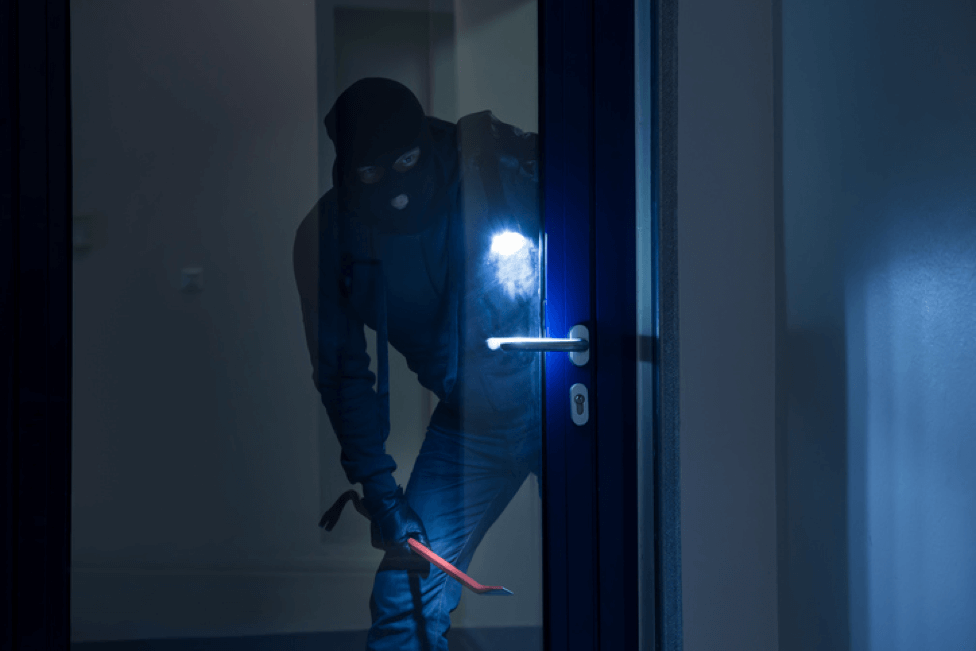
When it comes to securing your home, making sense of all the technology can feel overwhelming. There are many factors to consider such as the size your home, your budget, level of protection and ease of use. Every homeowner has unique needs, and every type of home security serves a distinct purpose. Learn about what goes into effective home security before you set up your system.
Door and Window Contacts
No matter how quietly someone opens a door or window, they cannot get past one with contacts to detect uninvited guests. This is the most popular type of home security and for good reason — your doors and windows are the weakest part of you home. Since doors and windows are extra vulnerable to intrusions, burglars tend to focus on these parts of the home during break-ins.
Door and window contacts use technology first developed in 1936 by Bell Telephone Laboratories. The idea is simple — two electrical connectors are placed near each other, one on the door or window and one on the frame. An electrical current is created by these connectors that creates a circuit. The only way to break the circuit is to open the door or window, separating the two connectors (and thereby triggering an alarm). It’s a simple solution that’s surprisingly effective.
Motion Detectors
What you can’t see can hurt you, or at least your pocketbook in the case of a robbery. Motion detectors give you an extra layer of security to monitor the home when you’re not around. The two main types of motion detectors are called active and passive sensors.
- Active sensors emit ultrasonic sound waves from each device which bounce off the walls until the unit detects them again. These sensors identify any disturbances in the wave pattern and set off the alarm when necessary.
- Passive sensors come in two varieties:
-
- Infrared motion detectors detect the infrared energy in body heat. They are fine-tuned enough to ignore small temperature changes throughout the day.
- Photo sensor detectors use laser beams and light sensors. When a person crosses the laser light, the sensor detects the change and signals the alarm.
Once a motion detector spots unusual activity, it sends a signal to the security control panel. Depending on your settings, the control center will send an alert to your phone or an external monitoring center. Certain motion detectors can trigger video recording once they’re activated, making sensor placement an important consideration. The most effective place to put motion detectors is in a centrally-located living area on the main floor. This is a place that an intruder must pass through to go anywhere else in the house, so detecting motion here can stop a crime as it’s just getting started.
Glass Break Sensors
Rather than invent a new type of glass with built in detectors, security experts have devised a much more elegant solution to catch window break-ins — microphones that recognize the sound of breaking glass. When glass breaks, it creates a very specific acoustical frequency. It’s the kind of noise that is difficult to recreate unless you actually shatter a pane of glass. The microphones specifically listen for the sounds associated with glass impact and shattering. If both of these sounds occur within a second of each other, there is a good chance somebody is breaking in.
Since it’s so difficult to trigger a false alarm with glass break sensors, homeowners typically leave them on even when the security system is in passive mode. Another benefit of these detectors is that it doesn’t take too many of them to monitor the windows in a room. One glass break sensor covers approximately 25 feet in every direction. As long as there’s nothing in the way to distort sound, they can easily protect your interior spaces from a reckless intruder.
Video Surveillance
Deterring a criminal is one thing, but holding them responsible for their actions is even better. With video surveillance systems, you get an extra set of eyes to watch over the home when you’re not around. Today’s cameras are better than ever, with HD resolution and the capacity to store more footage. Even better, certain cameras feature night-vision technology, giving homeowners an advantage over intruders who think darkness will conceal their crimes.
Some video surveillance systems even feature remote monitoring, so when you’re not home you can see what’s going on in and around your property. Even if nobody breaks into your home, cameras are great for checking in on the kids or dog while you’re away. Modern security systems allow you to use a mobile app to check in on this live home stream wherever you go. If you spend plenty of time away from home, cameras provide the peace of mind you’re looking for.
Secure Your Environment
When you’re ready to improve upon your home security, we are here to help make it happen. We will learn about your home’s unique security requirements and create solutions that make sense for your life. Contact us today to discover which home security systems will help protect your home against intrusions.